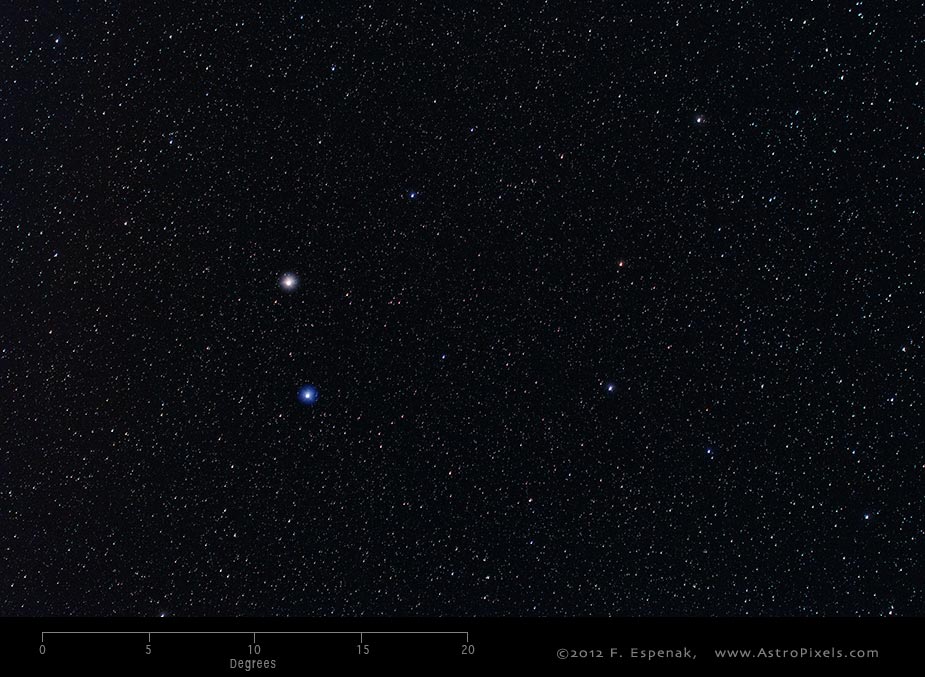Virgo
Virgo is a Zodiacal constellation otherwise known as the Virgin. It is one of the 48 Greek constellations originally described by the 2nd century astronomer Claudius Ptolemy (Wikipedia). Virgo remains one of the 88 modern constellations defined by the International Astronomical Union (Wikipedia).
Virgo (abbrev. = Vir; genitive = Virginis) covers 1294 square degrees or 3.14% of the celestial sphere making it the 2nd largest constellation. It contains 169 stars brighter than apparent magnitude 6.5, the brightest star being Spica (Alpha Virginis). See the Virgo Star Chart for a figure illustrating this constellation including the identification of its brighter stars.
The image above shows the 2012 conjunction of Saturn in Virgo. Saturn is the bright yellow star above blue Spica. For more information on his conjunction, see Virgo and Saturn.
Additional information on Virgo can be found at Wikipedia and U. Wisconsin. For a chart of Virgo, see Vir (IAU).
Technical Details
- Object: Virgo
- Date/Time: 2012 Apr 10 at 03:51 UTC
- Location: Bifrost Astronomical Observatory, Portal, AZ
- Mount: Losmandy G-11 German Equatorial Mount
- Lens: Nikkor AI 28mm f/2
- Camera: Canon EOS 550D (Rebel T2i)
- Field of View: 43.4° x 29.8° at 30.1 arc-sec/pixel (web version: 169 arc-sec/pixel)
- Exposure: 2 x 300s, f/5.6, ISO 800 and 120s, f/5.6, ISO 800 with Cokin A830 Diffusion Filter
- File Name: LeoMars-02w.jpg
- Processing (Adobe Camera Raw): Vignetting Correction, Noise Reduction, White Balance, Curves
- Processing (Photoshop CS5): Average Images, Curves, opacity (with diffusion image)
- Original Image Size: 3454 × 5179 pixels (17.9 MP); 11.5" x 17.3" @ 300 dpi
- Rights: Copyright 2012 by Fred Espenak. All Rights Reserved. See: Image Licensing.
